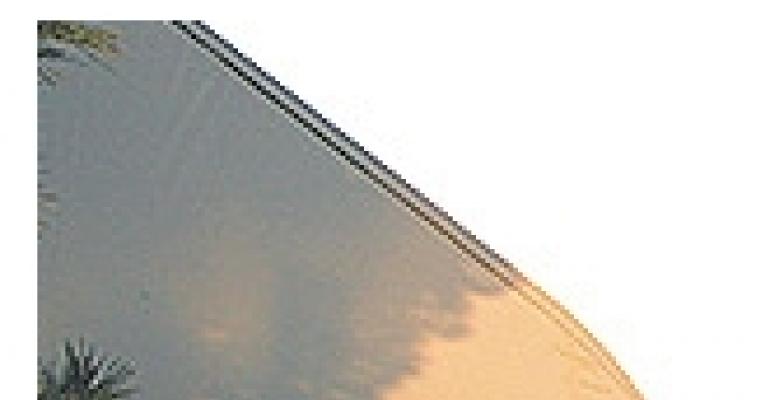
TODAY'S AMAZING TENTS come in shapes and styles perfect for providing shelter, but they still sometimes need help in the decor department, experts say.
DRESS TO IMPRESS
“In the past, tents were bought in colors like red, blue and green, but many of those weren't neutral enough, so the whole industry has basically gone to white, white and white,” explains Suzanne Warner, sales director of Tentnology, based in Surrey, British Columbia. “The problem is, how do you make [a basic tent] colorful, so it catches people's attention, or give it curves and movement?” She names viscount sashes — polyester mesh fabric that can be customized with logos and graphics — and custom banners as easy ways to add color to standard tent tops. Warner notes that Tentnology's tents have a hole in the corner of each of the castings that can support a rod fitted with a banner. “That way you don't have to staple or tape a banner to a tent,” she explains.

At Wilsonville, Ore.-based SEC Sales Group, accessories designed to add visual appeal to tents are also top sellers. General manager Dennis Carr notes that gathered and smooth tent liners, which conceal unsightly tent features such as the frame and legs, can be used to enhance the decor of a tent when used to line the ceiling and walls. And for illuminating tent interiors, the company's newly introduced tent frame structure adaptors “are specially designed to allow for the suspension of light fixtures and other items from the ceiling of a tent.” Carr says. Meanwhile, lighting accessories such as floor and planter lights are perfect for designating entry and exit locations for guests.
SAFE CASE
Of course, safety is an important consideration for any tent accessory. Tentnology's guy sails, which the company recently used to dress up tents at this summer's Olympic Games, add a practical safety element as well as a dash of color: The sails flare out from the main body of the tent and “prevent people from tripping over the guy ropes,” Warner explains.
Ralph Manuel, president of Anza Tents in Torrance, Calif., notes a demand for flame-retardant liners made from satin-like material for canopies and tents. “Canopy liners are a bit expensive, but usually cut down on the long draping labor cost of using velon or deco-cloth,” he says. And as far as staking tents securely, “Most of the [tent] industry is trying to avoid rope tie-down” of tents, Manuel explains. “We recommend converting ropes to web-and-rachet assembly systems to avoid wind damage.”
IN AND OUT

Providing visually appealing access to tents is the goal of Rancho Santa Margarita, Calif.-based S&MS EventDoors. The company manufactures a line of anodized aluminum doors for tents and fabric structures with safety and design features such as 4-inch stile rails designed for medium-to-high traffic flow, panic hardware and concealed overhead closures with “hold open” capabilities, says company president Larry Poellnitz. “The entrance door is the first and last encounter people have when entering and exiting a tent or fabric structure,” he notes.
Last year the company introduced V-Groove Colonial French glass — 1/4-inch-thick tempered glass that is beveled on the inside, but smooth on the outside — to its doors. “Most tent doors typically use applied mutton, which can eventually shift and collect dirt,” Poellnitz explains, noting that V-Groove glass panes “never shift and are easy to clean.” He recommends that clients refrain from disassembling the doors for storage or transportation reasons, noting that while EventDoors are “designed for easy assembly and disassembly, they will provide several additional years of trouble-free service if this is avoided.” The company also offers a forklift-able storage unit that can store four fully assembled doors and frames.
“Tent accessories can help transform temporary structures into anything you can imagine,” notes Kathy Shores, project manager at Atlanta-based De Boer Vinings. She names products such as smoked glass window panels and new sliding glass doors, which fit directly into the company's structures, as top sellers. Another new large-scale accessory is an “interior mezzanine,” which De Boer created for and introduced in July at the Democratic National Convention in Boston. By installing the mezzanine as a second floor of a 20-foot-tall Delta structure, De Boer was able “to double the useable square footage,” Shores says.
RESOURCES
Anza Tents, 888/637-8086, 310/320-6200; De Boer Vinings, 770/333-1886; S&MS EventDoors, 949/766-6750; SEC Sales Group, 800/621-2495; Tentnology, 800/663-8858





